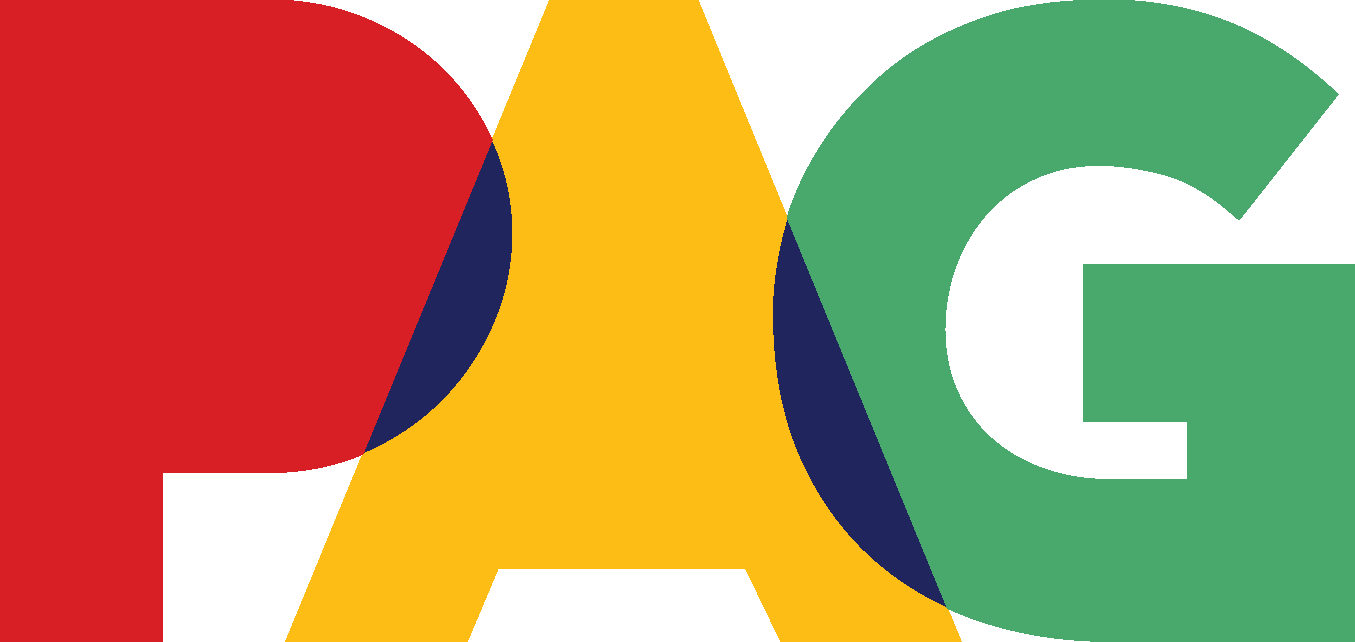Rooted in the Okanagan - Noll C. Derriksan
July 4th – september 9th, 2023
Toni onley gallery
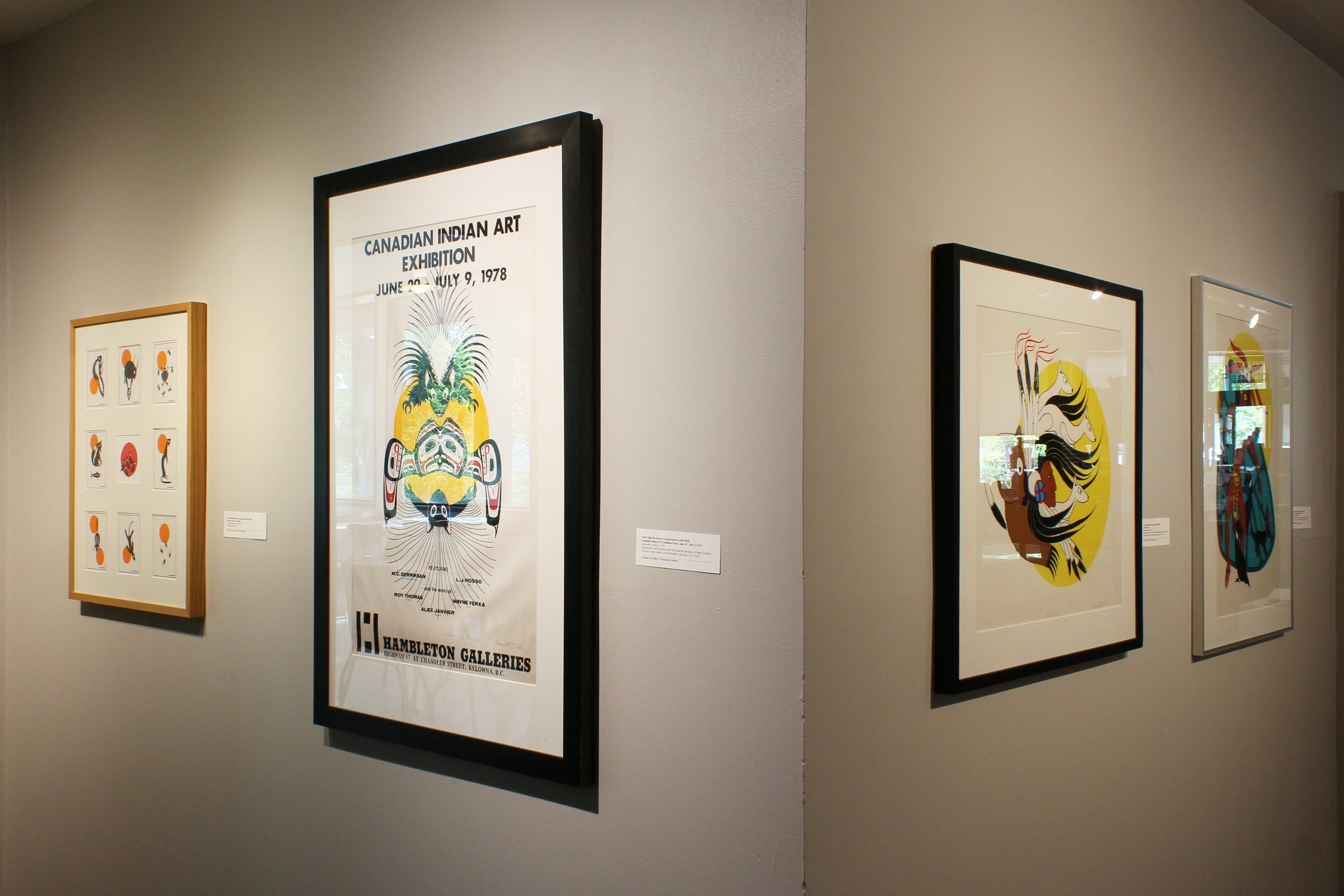
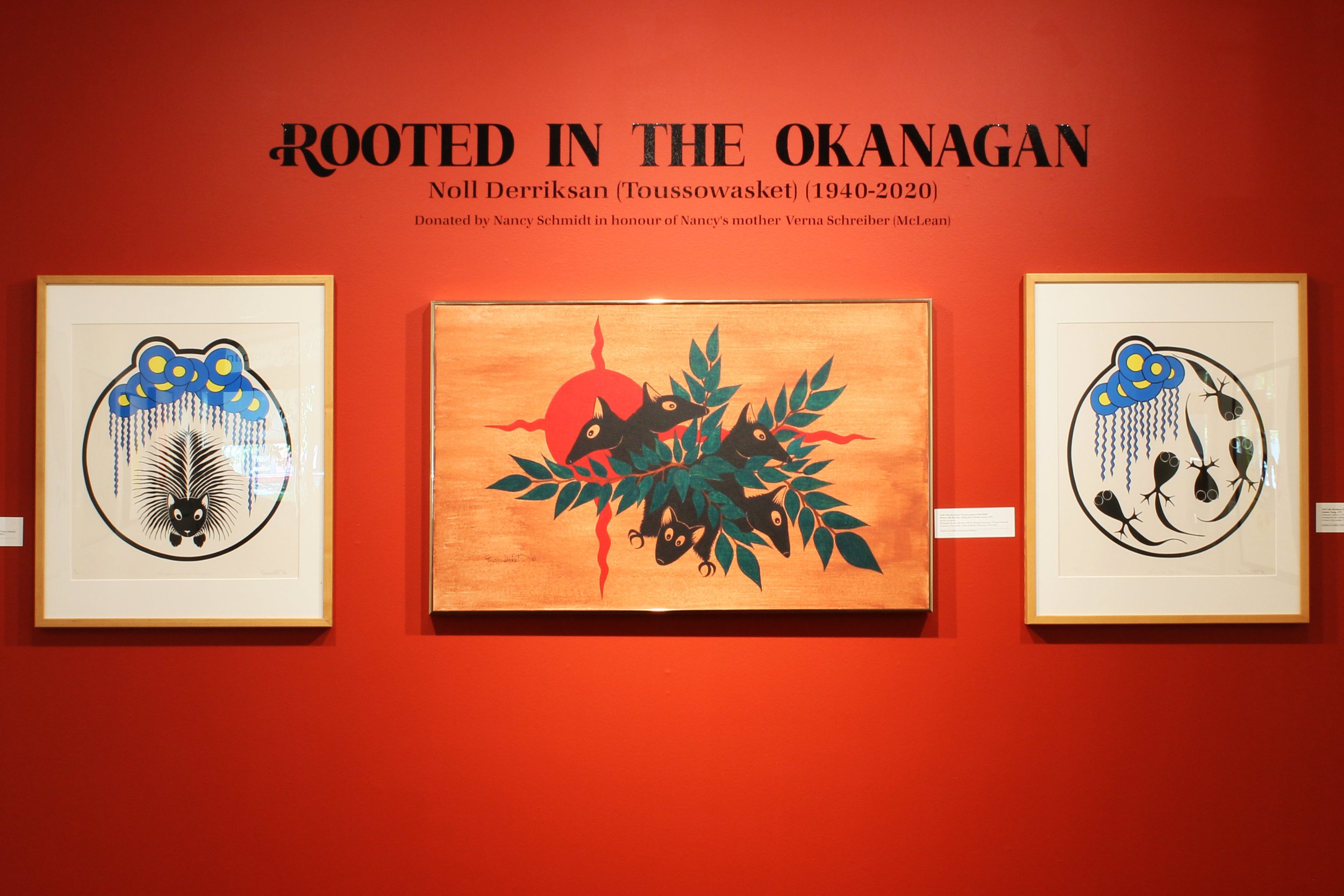
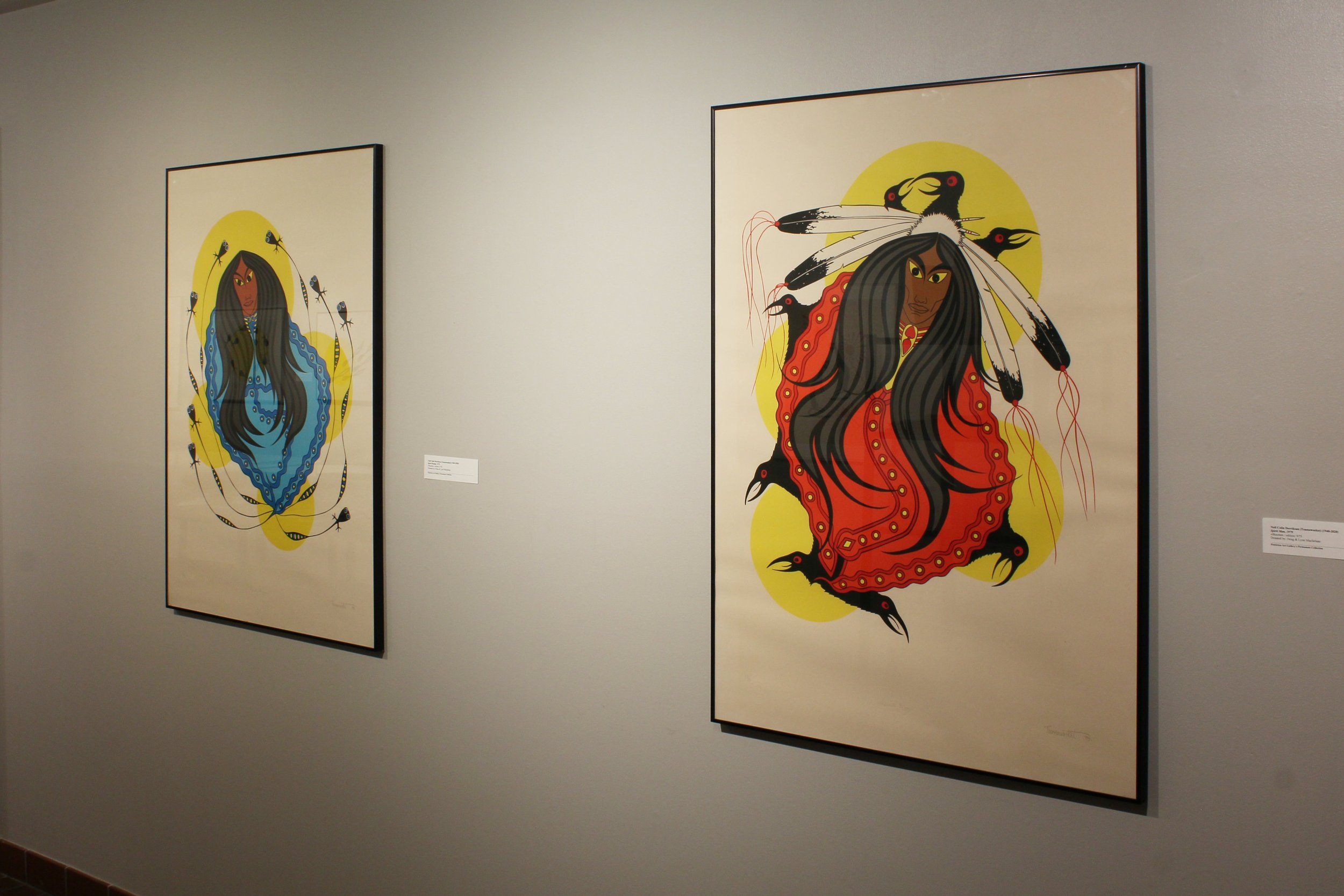
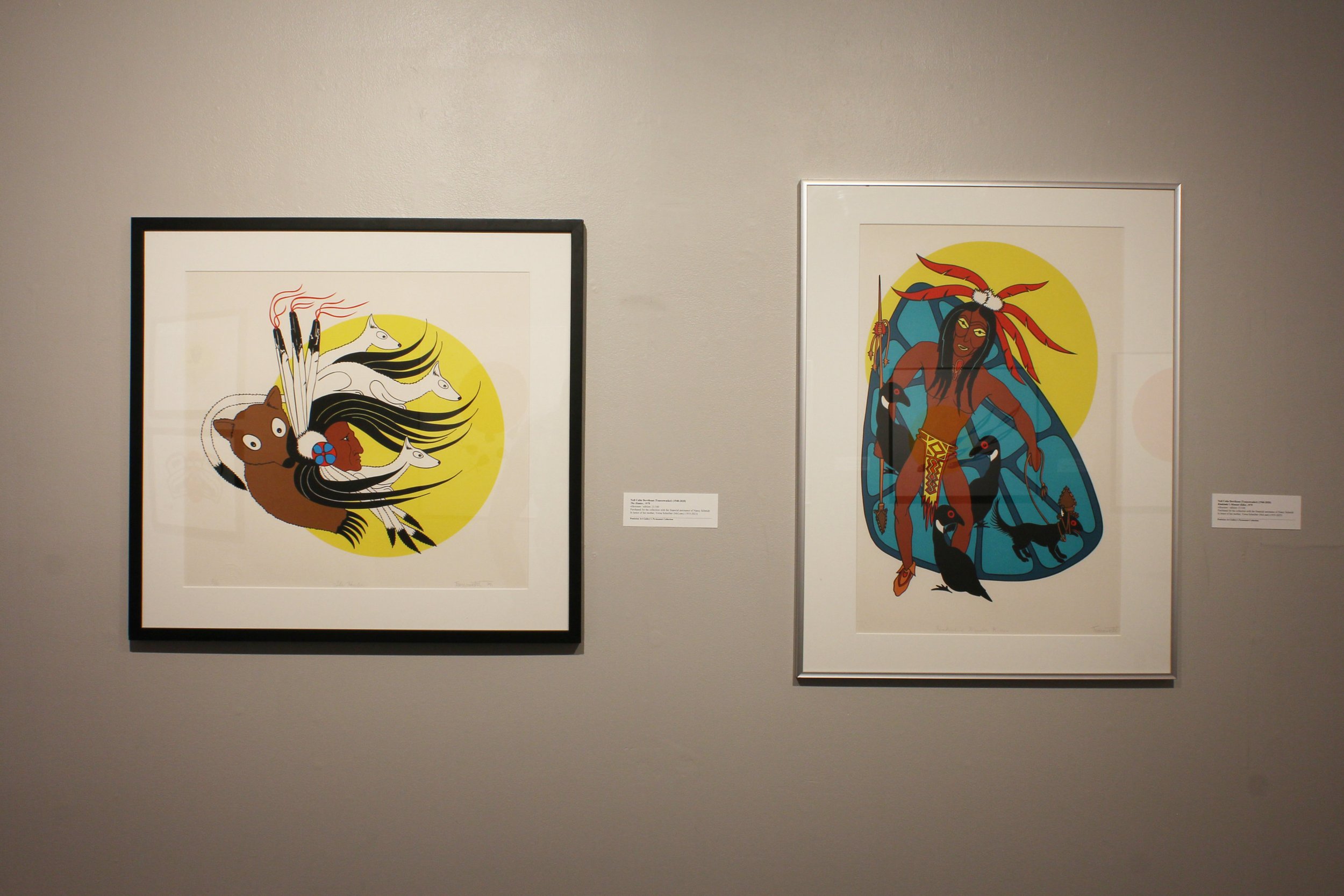
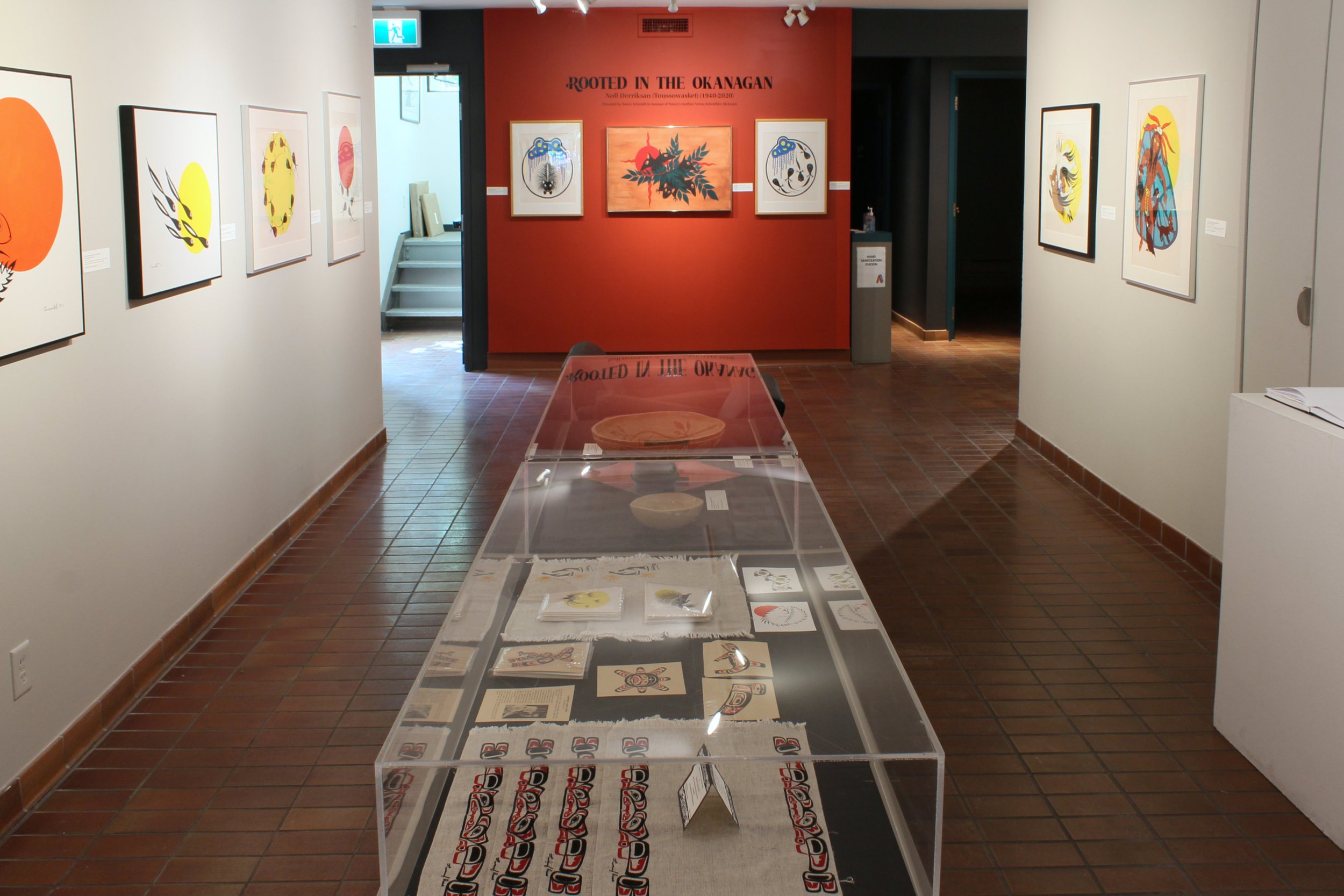
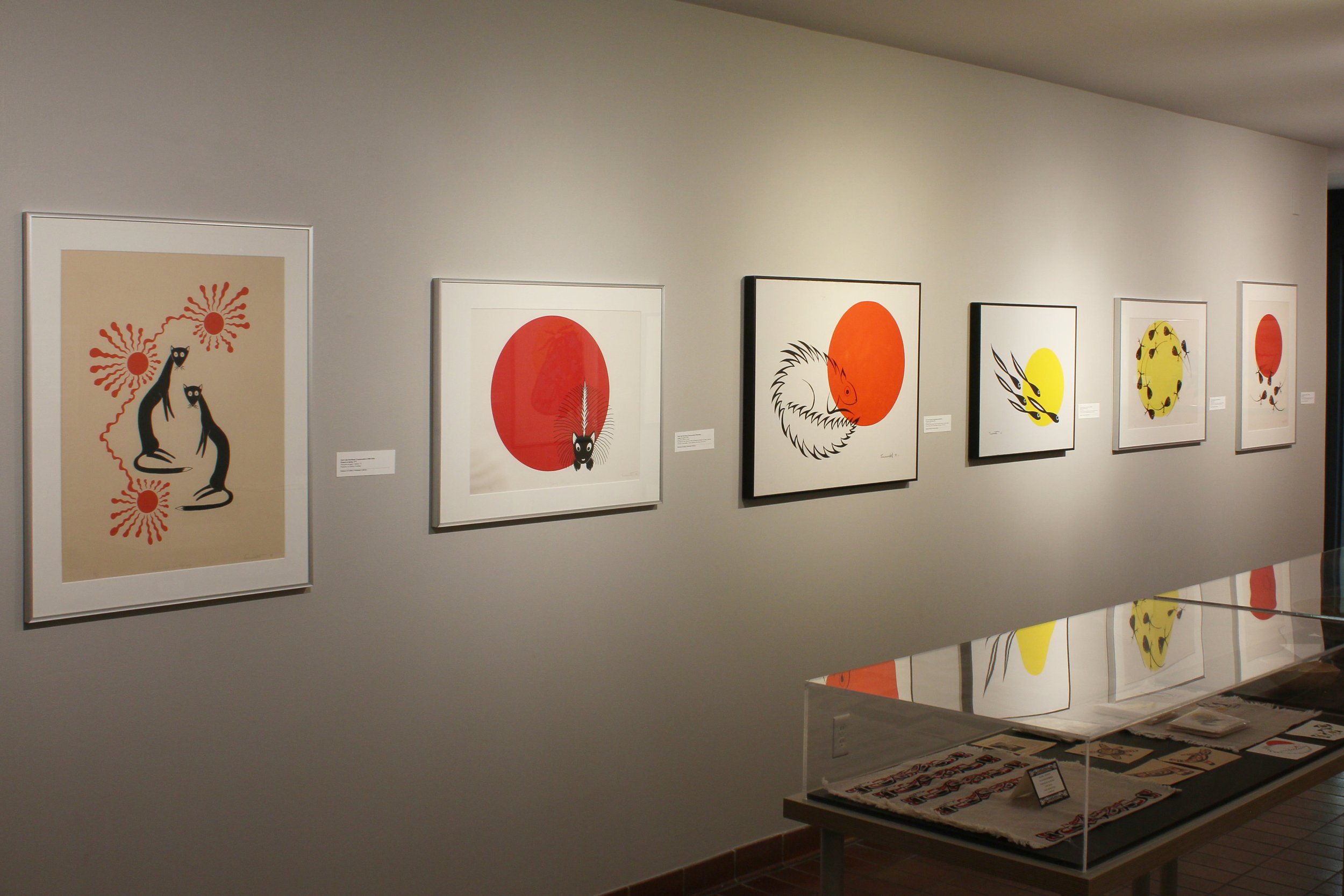
Exhibition Artist:
Noll Colin Derriksan (Toussowasket) (1940-2020)
My introduction to the artwork of Noll Derriksan began unexpectedly came in 2015 while visiting a thrift shop in Victoria when I stumbled upon a copy of his print titled "Weasels in Spring." The print was signed "Toussowasket" and at first, I assumed the piece was created by an artist belonging to the renowned woodland school of Indigenous artists, which is nestled in the heart of Canada. Upon my return home I began researching the artists and imagine my surprise when I discovered that the artist resided just up the highway in Westbank.
The serendipitous encounter with Noll Derriksan's artwork kindled a curiosity within me. Eager to learn more about the artist and his work I reached out to him in 2016 to learn more about his work and to see if we might be able to host an exhibition here at the Penticton Art Gallery. I was amazed to discover that Noll had started making art professionally in the early to mid-1960’s establishing himself as one of the first Contemporary syilx Artists working here in the Okanagan.
The development of Noll's artistic abilities was further nurtured by the arrival of Zeljko Kujundzic, a Yugoslavian-born artist who had relocated to Kelowna in 1964. Zeljko played a pivotal role in establishing the esteemed Kootenay School of Art and later founded the Kelowna Art Centre, a vibrant hub offering a diverse range of workshops in painting, printmaking, ceramics, sculpture, and jewelry. For Noll, Zeljko became not only a likeminded friend but also a significant and invaluable teacher and mentor, profoundly influencing the trajectory of Noll's artistic journey.
Noll drew inspiration from his childhood teachings, archetypal characters, and the native species of the Okanagan, such as tadpoles, frogs, porcupines, skunks, and geese. His artistic versatility allowed him to seamlessly work in various mediums, synthesizing and expressing his ancestral heritage through an impressive body of work. Noll C. Derriksan, also known by his traditional name, Toussowasket (Red Morning Sky), captured the essence of syilx culture through visual representations, including paintings, pottery, and graphics. He had an incredible design sense and created a visual language that was uniquely his own as there wasn’t a rich tradition of syilx visual art for him to draw upon. In doing so his contemporary take on the rich tradition of the syilx culture starting a new chapter by which other contemporary syilx artists have since followed.
In addition to his artistic pursuits, Noll Derriksan made significant contributions in the realm of politics. His political journey began in 1966 when he was elected to the Council of the Westbank First Nation. Through his leadership qualities and unwavering dedication to his community, Noll's role expanded, and he assumed the position of Grand Chief, serving from June 9, 1968, to June 12, 1974. During his tenure as Grand Chief, he played a pivotal role in guiding and representing the interests of the Westbank First Nation, tirelessly advocating his community’s rights and well-being. Noll's involvement in politics was not without its share of controversy, but it exemplified his strong commitment to serving his community and his unwavering determination to fight for Indigenous rights and self-determination.
Noll's dedication to supporting Indigenous art and artists extended far beyond his own creative pursuits. He not only owned and operated a successful commercial gallery but also established an art school to foster the development of the next generation of contemporary Indigenous artists. His commitment to nurturing artistic talent and promoting Indigenous art reached new heights in 1973 when he was elected President of the BC Indian Arts and Crafts Society. During his remarkable 17-year tenure as President, the society played a pivotal role in connecting and promoting Indigenous artists from various corners of the province. Through the provision of grants and the organization of an annual exhibition in Vancouver, the society facilitated a platform for Indigenous artists to showcase their artistic skills and cultural heritage to a wider audience. Noll's visionary leadership and tireless efforts ensured that Indigenous artists had opportunities to shine and make meaningful contributions to the artistic landscape of British Columbia.
Noll's involvement in national initiatives also included co-founding the National Indian Arts & Crafts Corporation in 1975, alongside Ron Chambers, Leonie Willier, Wellington Staats, and David Paul. Additionally, in 1976, he played a pivotal role in the establishment of the National Indian Art Council with Mavis Etienne, Ron Chambers, Willard Ahenakew, and Pat Bruderer. Both organizations were headquartered in Ottawa and shared a common mandate: the promotion of Native Art throughout Canada. Their efforts went beyond individual projects, as they actively worked towards establishing similar societies in each of the ten provinces and two territories. This collaborative approach aimed to strengthen Indigenous artistic communities across the country and provide greater recognition and support for Indigenous artists.
Meanwhile, a collective of Indigenous artists regularly convened at Daphne Odjig's gallery in Winnipeg. In November 1973, they formally established the Professional Native Indian Artists Incorporation (PNIAI). The distinguished members of this group included visionary artists Daphne Odjig, Alex Janvier, Jackson Beardy, Eddy Cobiness, Norval Morrisseau, Carl Ray, and Joseph Sanchez. Over time, they would come to be informally recognized as the Indian Group of Seven. Their collective mission revolved around gaining acceptance as professional contemporary artists, emphasizing that their artistic creations were equal in stature to those of their non-Indigenous counterparts exhibited within the mainstream art world. By challenging preconceived notions and pushing the boundaries, these artists sought to redefine and elevate Indigenous art in contemporary contexts.
In the mid-1980s, Noll's focus shifted from the visual arts as he expanded his business ventures to include developing his land holdings in Westbank. Consequently, his artistic work gradually receded into the background, and his incredible legacy began to be overlooked. However, this changed when his first exhibition in over thirty years took place at the Penticton Art Gallery in January 2017. The exhibition was met with tremendous success, not only reestablishing Noll's place in the contemporary Indigenous art movement but also contributing to the rising prominence of contemporary art in Canada.
Following the exhibition, our efforts at the Penticton Art Gallery have been focused on acquiring a collection of Noll's work for our Permanent Collection. Recently, we were presented with an exceptional opportunity to obtain a significant collection consisting of 15 works, including 3 paintings and 12 silkscreen prints, from an estate located in Kirkland, Washington. We are deeply grateful to Nancy Schmidt for her generous financial support, which enabled us to acquire this important collection. The acquisition is made in honor of Nancy's mother, Verna Schreiber (McLean), who was the great-granddaughter of Chief Francois, the last line of hereditary chiefs in the Okanagan. ♦
